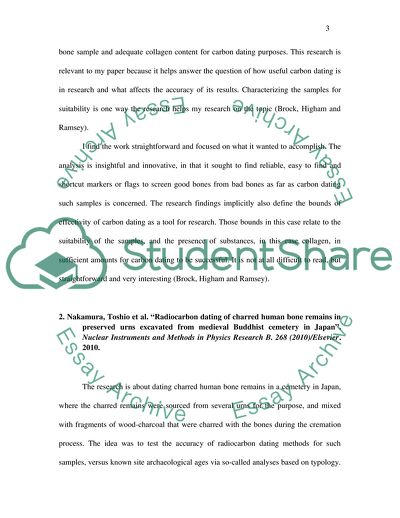Cite this document
(Five Sources About C14 Dating Annotated Bibliography Example | Topics and Well Written Essays - 1750 words, n.d.)
Five Sources About C14 Dating Annotated Bibliography Example | Topics and Well Written Essays - 1750 words. https://studentshare.org/archaeology/1797457-annotated-bibliography-of-five-sources-about-the-c14-dating
Five Sources About C14 Dating Annotated Bibliography Example | Topics and Well Written Essays - 1750 words. https://studentshare.org/archaeology/1797457-annotated-bibliography-of-five-sources-about-the-c14-dating
(Five Sources About C14 Dating Annotated Bibliography Example | Topics and Well Written Essays - 1750 Words)
Five Sources About C14 Dating Annotated Bibliography Example | Topics and Well Written Essays - 1750 Words. https://studentshare.org/archaeology/1797457-annotated-bibliography-of-five-sources-about-the-c14-dating.
Five Sources About C14 Dating Annotated Bibliography Example | Topics and Well Written Essays - 1750 Words. https://studentshare.org/archaeology/1797457-annotated-bibliography-of-five-sources-about-the-c14-dating.
“Five Sources About C14 Dating Annotated Bibliography Example | Topics and Well Written Essays - 1750 Words”. https://studentshare.org/archaeology/1797457-annotated-bibliography-of-five-sources-about-the-c14-dating.


